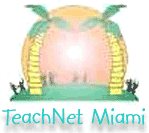

Where Do We Live?A Unit on HabitatsHow It Works:This unit is an exploration of three habitats. The habitats focused on are forests, deserts and oceans. Students begin with developing an understanding of what a habitat is. They them watch a PowerPoint presentation that introduces them to all three habitats. In this presentation, they will see animals from each area with links to additional information on each slide. Some links allow them to hear animal sounds such as whales and dolphins as well expose them to some of the fascinating projects out on the web such as The Jason Project. The unit goes on to explore each habitat individually after which students cooperatively complete murals for a class display. The forests habitat lesson goes a bit more into depth. It includes an additional lesson in which students visit a Guided Web Page about the rainforest and complete a "Scavenger Hunt." The unit culminates with a celebration where the class participates in a rainforest luncheon with a menu of foods that are grown or produced from vegetation in the rainforest. Standards:
The student understands the process and importance of genetic diversity. The student understands the competitive, interdependent, cyclic nature of living things in the environment. Estimated Class Periods To Complete: 6 Software and Materials Used: Materials needed are computers with Internet Access, Desktop Publishing and PowerPoint, assorted art supplies (see lessons), VCR, Internet, and visuals of animals and habitats.
Keywords: Habitats, environment, forests, deserts, oceans, Science, Life Science, rainforests, animals, plants, animal classification Students: This unit is intended for second to third grade levels. Activities can be expanded to make it a bit more challenging for higher grades as well as simplified for lower grade levels. Students are intended to work in a cooperative group atmosphere rather than individually. Prior knowledge of animal classifications and web browsing would be helpful. Overall Value: The unit's highlight is the use of visual presentations. The PowerPoint presentation in the introductory lesson motivates and catches studentsí attention. The Rainforest Scavenger Hunt helps students develop exploration and investigation techniques. The teacher introduces the unit and students are encouraged to go out and explore in order to discover for themselves. Tips: Adapt the unit according to what your students can handle. Perhaps provide more of the information yourself and guide them a bit more to the discoveries you want them to make. |
About the Teacher: Carmen Concepcion is a second grade teacher at Southside Elementary Bilingual School. She has been teaching for two years. She is currently working on her Masters in Computer Education at Barry University. Her class is part of the Citibank FamilyTech project that offers computer training to students, parents and teachers and provides classroom and home computers. Subjects: Science Grade Levels: 2 and 3
|
What do you think of my
project? I'd really like to hear your opinion -
Click here for a very brief survey.